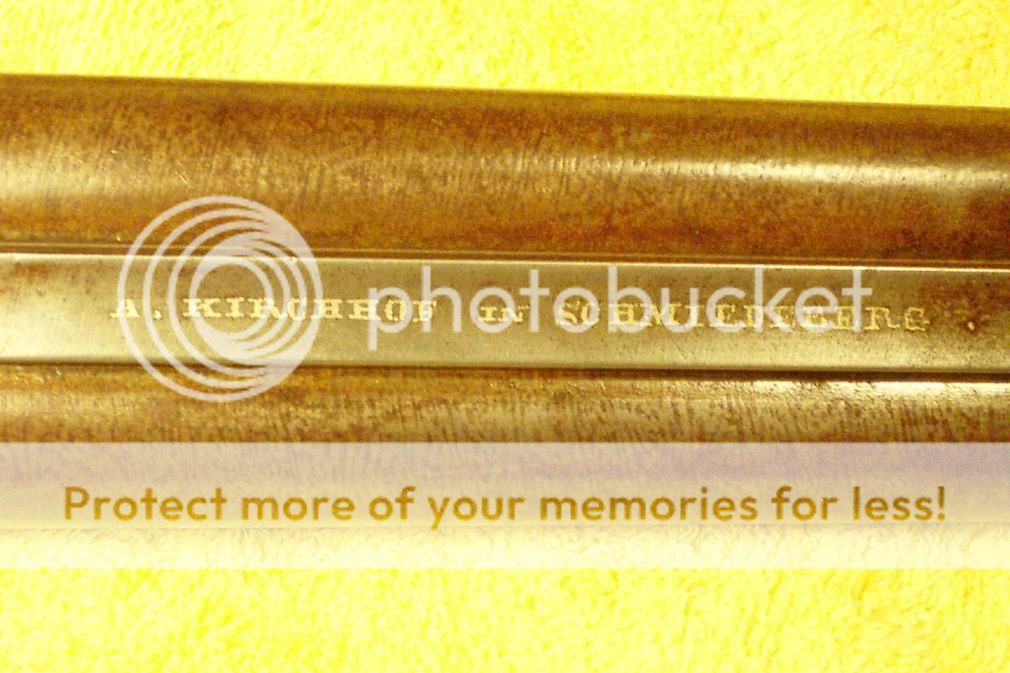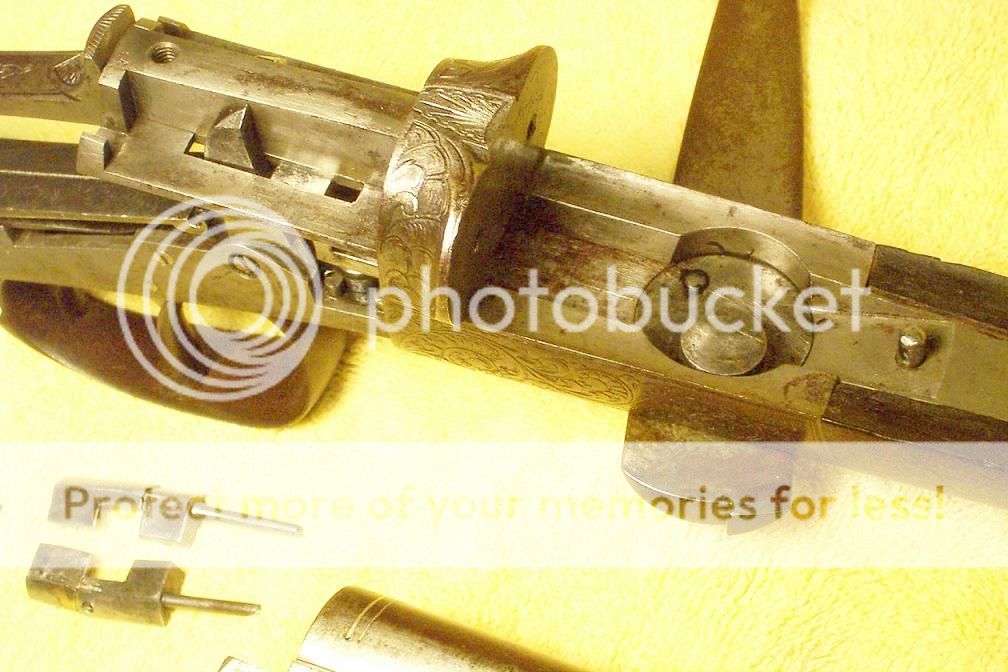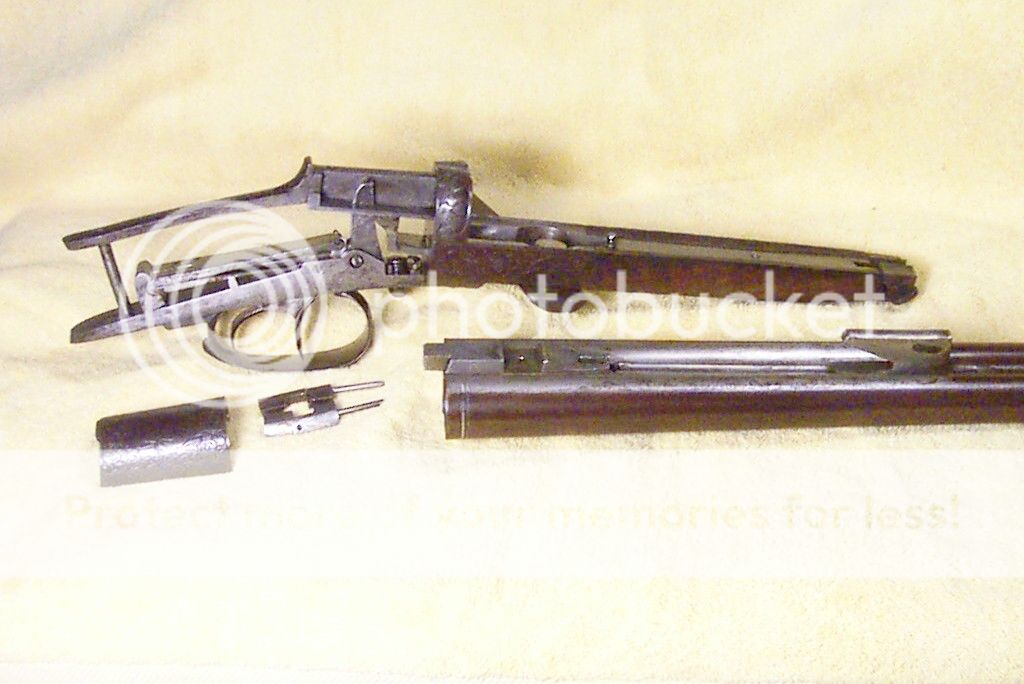Nothing more than "A.Kirchhof in Schmiedeberg" existed is known by us.
IMHO this Kirchhof gun was not made by the Teschner-Collath factory as it is an unique recombination of known features. Sorry, but Raimey posted the wrong drawings from Zimmer's book. Those show Berger's needlefire gun and cartridge.
Kirchhofs gun features the slide-and-tilt action as patented by L.J. Gastinne through the agent A.Bellford in Britain, # 2778 of 1853, and used by Charles Lancaster on his base-fire cartridge guns. Gastinne was the son in law of Albert Renette. During his travelling years Rudolph Berger of Köthen for some time worked at the Gastinne-Renette company in Paris. Back in Köthen as a master gunsmith Berger combined the Gastinne action with his own coilspring locks to use a needlefire cartridge of his own design. This is the gun shown above by Raimey. Now Gustav Teschner of Frankfurt on Oder comes in. He copied the Gastinne action as modified by Berger and combined it with triggerplate locks and an improved cartridge that is more aptly named a "nailfire", as he inserted a small nail, "c" in the drawing, into the cartridge head. This nail was struck by rather conventional short strikers and in turn pierced the primer "e".

Teschner's son in law Wilhelm Collath took over the company about 1870.He later adapted the action to centerfire cartridges. The Teschner-Collath factory continued to build guns on this action up until WW2. This is why such Gastinne-Berger-Teschner-Collath slide-and-tilt actions are now universally ascribed to "Collath".
This cut from Zimmer's book shows the Teschner-Collath gun with it's triggerplate action, strikers linked to the hammers. Soon Teschner (or his shop foreman and successor Collath) added the "Collath" "wing nut" hammer-blocking safety.

As you see, Kirchhof's gun has very different locks. The strikers are driven by the hammers in a straight line. Such locks are shown by Zimmer "as offered by Leue & Timpe, Berlin" on a true centerfire gun.

Kirchhof combined the G-B-T-C slide and tilt action with the "Leue&Timpe" lockwork and added a hammerblock safety apparently of his own design, activated by a small crank in front of the triggerguard. He was not alone in making "improved" slide-and-tilt actioned guns in northern and northeastern Germany. F.i. both Kief and Westphal in Peine , though both outlets for Teschner too, offered their own "improved" guns with different safety arrangements. I have also seen a "Teschner-Collath" lookalike by another gunsmith, but with coilspring striker locks inside, and a shotgun by G.L.Rasch in Brunswick with a Lefaucheux breech action and Teschner's triggerplate locks and wing-nut safety. So the possible variation and recombinations are endless. Remember, the rough Damascus barrels were mostly imported then from Belgium anyhow and all other parts of a gun were hand-filed from very rough forgings. Any village blacksmith then was capable of producing such forgings and a shop employing a dozen gunsmithes like Kief's or Störmer's was certainly capable to make such guns.
IMHO this Kirchhof gun was really made by himself to his own ideas of a combination of features he thought the best. As it comes from the transitional time from pin- and needlefire to centerfire, it may have been built as a centerfire from the start.







